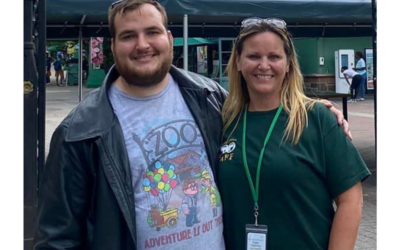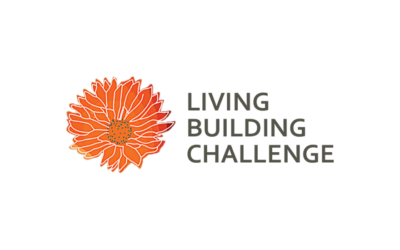We returned from the AZA Directors’ Policy Conference with much to mull over, having gathered with zoo and aquarium leadership to learn, debate, and brainstorm current issues affecting our (and broader) professions (and communities). What were the common themes? We’re sharing what we gleaned from these discussions to help spur your creative juices as we collectively work to support our “for purpose” conservation missions:
-
“There’s a disconnect between mission and how we act on it” – Lily Maynard’s research exposed that there’s no relationship between organization mission statements and their conservation impact/outcomes. Conservation themes are reflected in many AZA institution’s mission statements. But–perhaps not surprisingly–this doesn’t mean that it’s well integrated into their organization and their organization’s culture. In fact, just 32% of AZA zoo and aquarium projects encourage any conservation actions by the public. We heard from members that have worked hard to integrate the conservation aspects of their mission into their culture and have found great success. As an example, Lee Ehmke shared that the Houston Zoo has worked diligently at this concept and has found that it not only leads to great conservation impact and engagement with guests, but to higher retention, better morale, and increased revenue.
Does your mission statement truly reflect your core purpose and get to your why? Are you really living your mission statement? Knowing the answers to these questions can help you stay relevant in these changing times. In the coming months, Zoo Advisors will be exploring what makes a good mission and how you can bring it to life in your organization.
-
“Conservation is a people problem.” – We know we’re facing huge conservation challenges. And we also know that conservation is less about animals, and more about motivating people. What we’re really facing is a “tsunami of pessimism in our country”. How do we address this? We already have visitors to our zoos and aquariums that trust us and have wonderful, memorable experiences when they visit. These same guests want us to tell them how to help the planet—we have considerable evidence that guests want this—and find that this enhances their experience. AZA and its members are working to help members do this. While many AZA zoos and aquariums are already engaging their visitors in meaningful conservation action, AZA is helping to build upon this via the Saving Animals from Extinction (SAFE) program—they now have 26 SAFE species!—and will be developing pilot programs to make it easy for members to build on their existing work.
-
“Become advocates for social change.” – Along these same lines, John Scanlon, keynote speaker, succinctly stated: “We need to build a bold constituency for wildlife.” The way to gain real impact in conservation is through long-term commitment and an organizing principle. We need to scale up—“We’re doing too many small disparate conservation projects that don’t add up to real impact.” The most impactful area? Policy and social change. We have the power and the audiences to gain greater public engagement and recognition. We can be “the voice” for our state public agencies (the “unsung heroes”). And we need to be a bigger, better player on the world’s stage. We’re not engaged globally—Did you know that the U.S. is the only country that’s not a party to the convention on biodiversity to save the planet? In short, zoos and aquariums need to “get involved or get shut down”.
-
“Thinking differently about our ‘critics’.” – We’ve been largely reactive to negativity thrust upon us by animal rights/animal protection organizations—specifically those that have worked with organizations like Trip Advisor, AirBnB, Expedia, etc. We received a challenge—to think differently about our approach to these organizations and these situations—to turn this issue around and advocate creatively. We’ve tried “being the expert”, but that hasn’t gained public trust. We’ve tried fighting back, but that hasn’t worked either. Rather, the speakers told us that “we need to lead with empathy.” For example, rather than “oppose” these organizations, we need to first listen to them, and then hopefully find a way to listen to each other. Also, consider working proactively with these organizations—reach out to them to be their partners as they develop their animal-related policies. Until now, they’ve been setting the tone and dictating the policy. Can we anticipate their next move and begin that dialogue proactively? Another area where we can show our impact is wildlife trafficking. Let’s proactively define our role here. Can we be rescue centers for confiscated animals, perhaps through regional networks like Southern California? Our message should be that “we save wildlife everywhere.”
-
“How do we handle sustainable populations?” – There was much focus on sustainable populations, and it’s clear that we’re still trying to crack the nut. There’s been some progress but nowhere near enough, and there’s significant worry about the impact of this on our long-term future. We’re struggling to align the current SSP model with our commitment to care for “animals everywhere” and also serve as rescue centers (see above). We also must balance the need to secure individual animals with the need to have the highest ethical standards in acquisition and care, including looking at potential partners’ partners.
-
“Diversity comes when you practice equity and inclusion.” – DEI can’t be a “nice to have” piece but an essential. We all have biases. And we rarely know what these biases are—most of them are unintended, and we’re unaware of them. We were introduced to the Harvard Implicit Association Test, which “measures the strength of associations between concepts (e.g., black people, gay people) and evaluations (e.g., good, bad) or stereotypes (e.g. athletic, clumsy).” Teams that have used these “tests” and discussed the results have had success in becoming more aware of their biases and hopefully moving beyond them. We all need to work to increase the diversity within our staff. Not only is it critical to have the diversity of thought that comes with cultures that reflect diversity and inclusion, but as our population becomes more and more diverse ethnically, our staff must reflect this. We must become community centers for all of our populations—this is the right thing to do and good for business.
-
“Which came first? The leader or the culture?” – A constant theme throughout much of these discussions was about our organizational cultures and leadership. Several speakers referenced that all leaders create cultures, they just don’t all know it. This came out through the discussions on diversity, equity, and inclusion, as well as bringing your “mission” to life in your organization.
As you can see, each of these themes isn’t new, but how we’re being asked to address them moving forward is. We need to be innovative and proactive to create a culture of conservation, coordinate responses to animal rights groups, develop sustainable collection management plans, implement staff and visitor diversity plans, plan for environmental sustainability, re-evaluate exhibit design, and train the next generation of leaders. It’s a lot to digest and mull over, but through continuing discussions at forums such as DPC and resulting internal socialization, we have the brainpower and passion to address each one successfully.
We challenge you to identify with and embrace these themes, discuss them with your colleagues, and contact Zoo Advisors for support in engaging to affect change.





